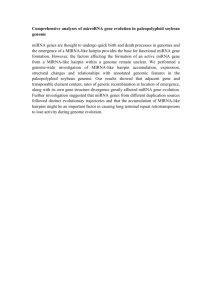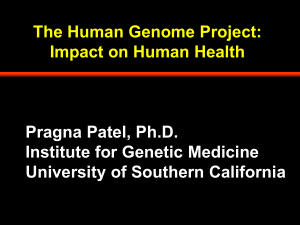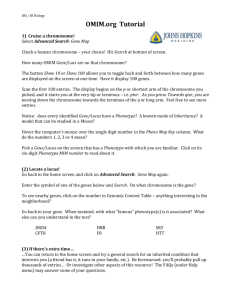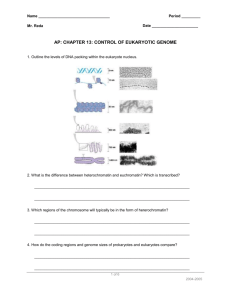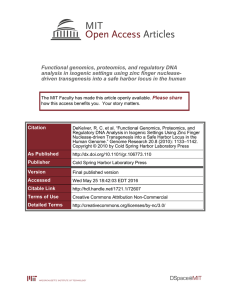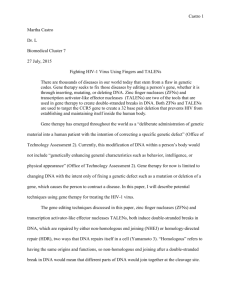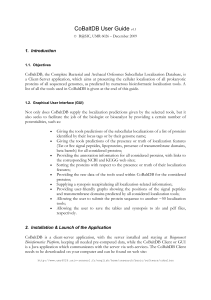in vivo genome editing with zinc finger proteins
advertisement
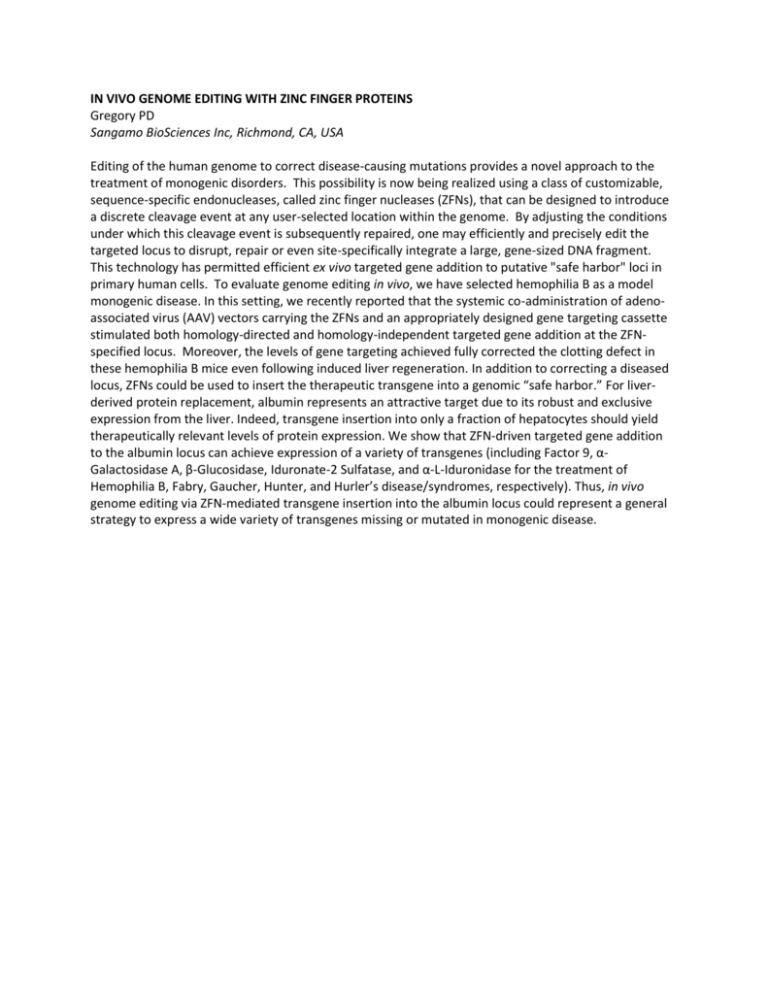
IN VIVO GENOME EDITING WITH ZINC FINGER PROTEINS Gregory PD Sangamo BioSciences Inc, Richmond, CA, USA Editing of the human genome to correct disease-causing mutations provides a novel approach to the treatment of monogenic disorders. This possibility is now being realized using a class of customizable, sequence-specific endonucleases, called zinc finger nucleases (ZFNs), that can be designed to introduce a discrete cleavage event at any user-selected location within the genome. By adjusting the conditions under which this cleavage event is subsequently repaired, one may efficiently and precisely edit the targeted locus to disrupt, repair or even site-specifically integrate a large, gene-sized DNA fragment. This technology has permitted efficient ex vivo targeted gene addition to putative "safe harbor" loci in primary human cells. To evaluate genome editing in vivo, we have selected hemophilia B as a model monogenic disease. In this setting, we recently reported that the systemic co-administration of adenoassociated virus (AAV) vectors carrying the ZFNs and an appropriately designed gene targeting cassette stimulated both homology-directed and homology-independent targeted gene addition at the ZFNspecified locus. Moreover, the levels of gene targeting achieved fully corrected the clotting defect in these hemophilia B mice even following induced liver regeneration. In addition to correcting a diseased locus, ZFNs could be used to insert the therapeutic transgene into a genomic “safe harbor.” For liverderived protein replacement, albumin represents an attractive target due to its robust and exclusive expression from the liver. Indeed, transgene insertion into only a fraction of hepatocytes should yield therapeutically relevant levels of protein expression. We show that ZFN-driven targeted gene addition to the albumin locus can achieve expression of a variety of transgenes (including Factor 9, αGalactosidase A, β-Glucosidase, Iduronate-2 Sulfatase, and α-L-Iduronidase for the treatment of Hemophilia B, Fabry, Gaucher, Hunter, and Hurler’s disease/syndromes, respectively). Thus, in vivo genome editing via ZFN-mediated transgene insertion into the albumin locus could represent a general strategy to express a wide variety of transgenes missing or mutated in monogenic disease.



